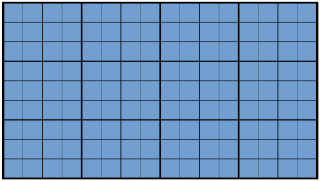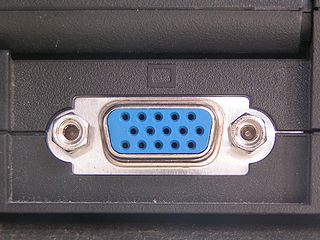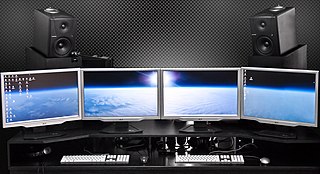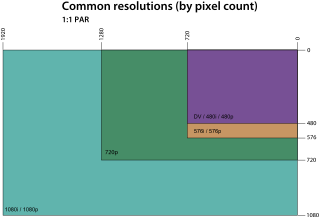A monitor mount is a supportive bracket or arm designed to hold up a computer monitor, laptop, notebook or other display screen. Monitor arm and monitor bracket are other common terms for this device.
A monitor mount is a supportive bracket or arm designed to hold up a computer monitor, laptop, notebook or other display screen. Monitor arm and monitor bracket are other common terms for this device.
Flat panel monitors became increasingly popular as the technology grew less expensive during early to mid 2000s. These lighter monitors were better suited for a wider range of movement than the heavier cathode ray tube monitor that was previously sold with most computers. The patent for inventing the monitor mount belongs to Rob Mossman and is dated from September 20, 2006; [1] however monitor mounts have been available for at least six years before the patent was issued. Several companies like Ergotron, Multibrackets ab, Mount- it, Loctek and Herman Miller have been producing mounts since the early 2000s.
The added functionality of monitor mounts has made them very popular. Depending on the model, monitor mounts can move up and down, rotate, tilt, retract and swivel. VESA is an organization that manages the standards for mounting solutions. In 1997, VESA came up with a standard hole size and screwing pattern for flat panel screens, called Flat Display Mounting Interface (usually known as VESA mount), which is still valid today. Almost all monitor mounts follow this VESA standard in one form or another. Monitor manufacturers typically create a standard VESA hole pattern on the back of the monitor for mounting purposes.
A monitor mount placed at the appropriate height, distance and angle can help “prevent possible health effects such as excessive fatigue, eye strain, and neck and back pain.” [2] Monitor mounts are especially important for anyone using a standing or walking desk because of the dynamic height and stability requirements for those applications. [3]

A computer monitor is an output device that displays information in pictorial or textual form. A discrete monitor comprises a visual display, support electronics, power supply, housing, electrical connectors, and external user controls.

A 19-inch rack is a standardized frame or enclosure for mounting multiple electronic equipment modules. Each module has a front panel that is 19 inches (482.6 mm) wide. The 19 inch dimension includes the edges or "ears" that protrude from each side of the equipment, allowing the module to be fastened to the rack frame with screws or bolts. Common uses include computer servers, telecommunications equipment and networking hardware, audiovisual production gear, and scientific equipment.

A desktop computer is a personal computer designed for regular use at a single location on or near a desk due to its size and power requirements. The most common configuration has a case that houses the power supply, motherboard, disk storage ; a keyboard and mouse for input; and a computer monitor, speakers, and, often, a printer for output. The case may be oriented horizontally or vertically and placed either underneath, beside, or on top of a desk.

VESA, formally known as Video Electronics Standards Association, is an American technical standards organization for computer display standards. The organization was incorporated in California in July 1989 and has its office in San Jose. It claims a membership of over 300 companies.
VESA BIOS Extensions (VBE) is a VESA standard, currently at version 3, that defines the interface that can be used by software to access compliant video boards at high resolutions and bit depths. This is opposed to the "traditional" int 10h BIOS calls, which are limited to resolutions of 640×480 pixels with 16 color (4-bit) depth or less. VBE is made available through the video card's BIOS, which installs during boot up some interrupt vectors that point to itself.
Computer display standards are a combination of aspect ratio, display size, display resolution, color depth, and refresh rate. They are associated with specific expansion cards, video connectors and monitors.

A graphics card is an expansion card which generates a feed of output images to a display device, such as a computer monitor. Graphics cards are sometimes called discrete or dedicated graphics cards to emphasize their distinction to integrated graphics. A graphics processing unit that performs the necessary computations is the main component of a graphics card, but the acronym "GPU" is sometimes also used to refer to the graphics card as a whole.

A laptop, laptop computer, or notebook computer is a small, portable personal computer (PC) with a screen and alphanumeric keyboard. Laptops typically have a clam shell form factor with the screen mounted on the inside of the upper lid and the keyboard on the inside of the lower lid, although 2-in-1 PCs with a detachable keyboard are often marketed as laptops or as having a "laptop mode". Laptops are folded shut for transportation, and thus are suitable for mobile use. They are so named because they can be practically placed on a person's lap when being used. Today, laptops are used in a variety of settings, such as at work, in education, for playing games, web browsing, for personal multimedia, and for general home computer use.

A desk or bureau is a piece of furniture with a flat table-style work surface used in a school, office, home or the like for academic, professional or domestic activities such as reading, writing, or using equipment such as a computer. Desks often have one or more drawers, compartments, or pigeonholes to store items such as office supplies and papers. Desks are usually made of wood or metal, although materials such as glass are sometimes seen.

The computer desk and related ergonomic desk are furniture pieces designed to comfortably and aesthetically provide a working surface and house or conceal office equipment including computers, peripherals and cabling for office and home-office users.

16:9 is a widescreen aspect ratio with a width of 16 units and height of 9.

The Video Graphics Array (VGA) connector is a standard connector used for computer video output. Originating with the 1987 IBM PS/2 and its VGA graphics system, the 15-pin connector went on to become ubiquitous on PCs, as well as many monitors, projectors and high-definition television sets.

In personal computing, a tower is a form of desktop computer whose case stands vertically upright. Although the tower may be stored right alongside the monitor and peripherals, a common configuration is to place the tower on the floor or in an under-desk compartment, in order to save space on the literal desktop for other items. Multiple subclasses of the tower form factor have been established to differentiate their varying heights. Such subclasses include full-tower, mid-tower, midi-tower, and mini-tower; these classifications are nebulously defined and inconsistently applied by different manufacturers, however. Computer systems housed in the traditional horizontal form factor—once popularized by the IBM PC in the 1980s but fallen out of mass use since the 1990s—have been given the term desktops, to contrast them with the usually-floor-situated towers.

Multi-monitor, also called multi-display and multi-head, is the use of multiple physical display devices, such as monitors, televisions, and projectors, in order to increase the area available for computer programs running on a single computer system. Research studies show that, depending on the type of work, multi-head may increase the productivity by 50–70%.
In computing, a docking station or port replicator (hub) or dock provides a simplified way to plug-in a mobile device, such as a laptop, to common peripherals. Because a wide range of dockable devices—from mobile phones to wireless mouse—have different connectors, power signaling, and uses, docks are unstandardized and are therefore often designed for a specific type of device.
The Flat Display Mounting Interface (FDMI), also known as VESA Mounting Interface Standard (MIS) or colloquially as VESA mount, is a family of standards defined by the Video Electronics Standards Association for mounting flat panel monitors, televisions, and other displays to stands or wall mounts. It is implemented on most modern flat-panel monitors and televisions.

Drum hardware refers to the parts of a drum or drum kit that are used to tension, position, and otherwise support the instruments themselves.

Asus EeeBox PC is a nettop computer line from ASUSTeK Computer Incorporated, and a part of the Asus Eee product family. First released on August 11, 2008, the Asus EeeBox PC series is marketed as a small, light, inexpensive and energy-efficient counterpart to the Asus Eee PC netbook / subnotebook laptop series. Its motherboard employs Splashtop technology called Express Gate by Asus.

A personal computer (PC) is a multi-purpose microcomputer whose size, capabilities, and price make it feasible for individual use. Personal computers are intended to be operated directly by an end user, rather than by a computer expert or technician. Unlike large, costly minicomputers and mainframes, time-sharing by many people at the same time is not used with personal computers. Primarily in the late 1970s and 1980s, the term home computer was also used.

The graphics display resolution is the width and height dimension of an electronic visual display device, measured in pixels. This information is used for electronic devices such as a computer monitor. Certain combinations of width and height are standardized and typically given a name and an initialism that is descriptive of its dimensions. A graphics display resolution can be used in tandem with the size of the graphics display to calculate pixel density. An increase in the pixel density often correlates with a decrease in the size of individual pixels on a display.